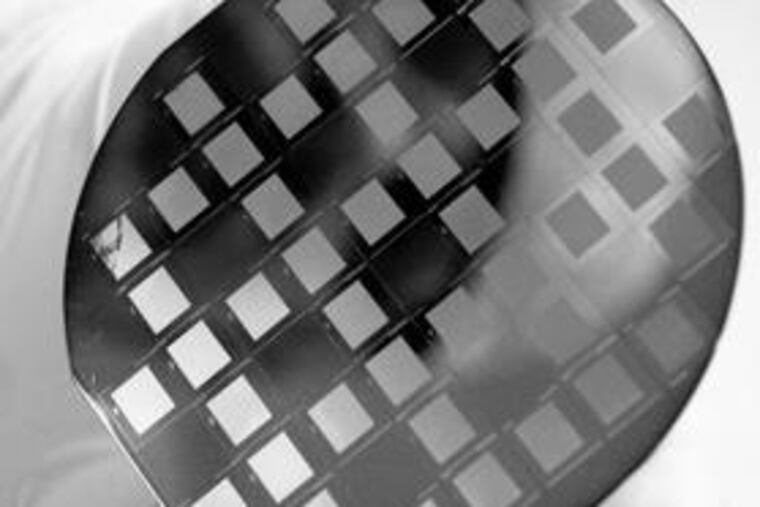Big boost for tiny technology
ITHACA, N.Y. - Neil Kane and his staff had figured out how to rearrange methane gas to create industrial diamonds, but their company could not afford to build the highly specialized lab needed for developing such nanotechnology.

ITHACA, N.Y. - Neil Kane and his staff had figured out how to rearrange methane gas to create industrial diamonds, but their company could not afford to build the highly specialized lab needed for developing such nanotechnology.
So they hit the rental market and paid for lab time at Cornell University's NanoScale Science and Technology Facility.
Thirteen nano-level university laboratories across the country are hiring themselves out to businesses eager to make their mark in the millennium of the minuscule. The intimidatingly named National Nanotechnology Infrastructure Network, begun in 2004, is funded in part with $14 million a year from the National Science Foundation.
Participating business owners say the network allows them to do much more research than they would have without access to its resources. That research, to which the businesses retain all rights, will foster better products and industrial processes that will bolster the national economy, they say.
The number of companies taking advantage of the network is growing 10 percent a year, said the National Science Foundation's senior engineering adviser, Lawrence Goldberg.
Host universities can apply the fees they receive to anything they like, including additions to their lab equipment. Those fees ranged in fiscal 2007 from a few hundred dollars to $100,000. Cornell's lab and a dozen other campus nano-labs around the country cater mainly to students, faculty and visiting scholars. They are built and run with public and private money.
Besides Cornell's lab, participants are at Stanford, Pennsylvania State, Harvard, Howard and North Carolina State Universities, the Georgia Institute of Technology and the universities of Michigan, Washington, California, Minnesota, New Mexico and Texas.
Even though the universities must give up some use of the labs and do not get royalties from the business work done there, as they would from most academic work that later proved marketable, the arrangement seems to sit well with universities, businesses and government.
Mark Zupan, dean of the University of Rochester's Simon Graduate School of Business Administration in Rochester, N.Y., sees the trade-off as promoting innovation. He said he worried only that businesses might try to use the universities' names or reputations to enhance the credibility of their research.
Kane, president of Advanced Diamond Technologies Inc., near Chicago, said his company could not hope to turn its patented material into a cell phone chip or a vision-restoring retinal implant if it could not rent lab time at Cornell.
"We have our own equipment for making the diamond," Kane said. "But all of the subsequent steps require access to a clean room, to tens of millions of dollars of equipment that no small company could ever afford. Many big companies can't afford it either."
Machines coated with hard, heat-resistant, low-friction diamond last longer and work more efficiently, Kane said. His company's specialty is depositing the diamond uniformly on silicon wafers, a key innovation toward someday making micro-machines entirely out of diamond.
Even Fortune 500 firms "that can afford to have their own research infrastructure are not comfortable enough to handle some new nanomaterials" and rely on academia to help them out, said Yoshio Nishi, a former chief scientist at Texas Instruments Inc. who heads the Stanford Nanotechnology Facility in California.
Although the operating scale is infinitesimal - a nanometer is roughly 10,000 times smaller than the diameter of a human hair - the economic possibilities are colossal. By 2014, nanotechnology may generate $2.6 trillion of manufacturing output and employ 2 million people, Lux Research Inc., of New York, estimates.
In the 12 months through September, nearly 700 companies - mostly small start-ups, but also some corporate titans - paid for lab space and research help from the network, which is anchored by Cornell and Stanford and boasts top-of-the-line nanoengineering tools, techniques and staffs.